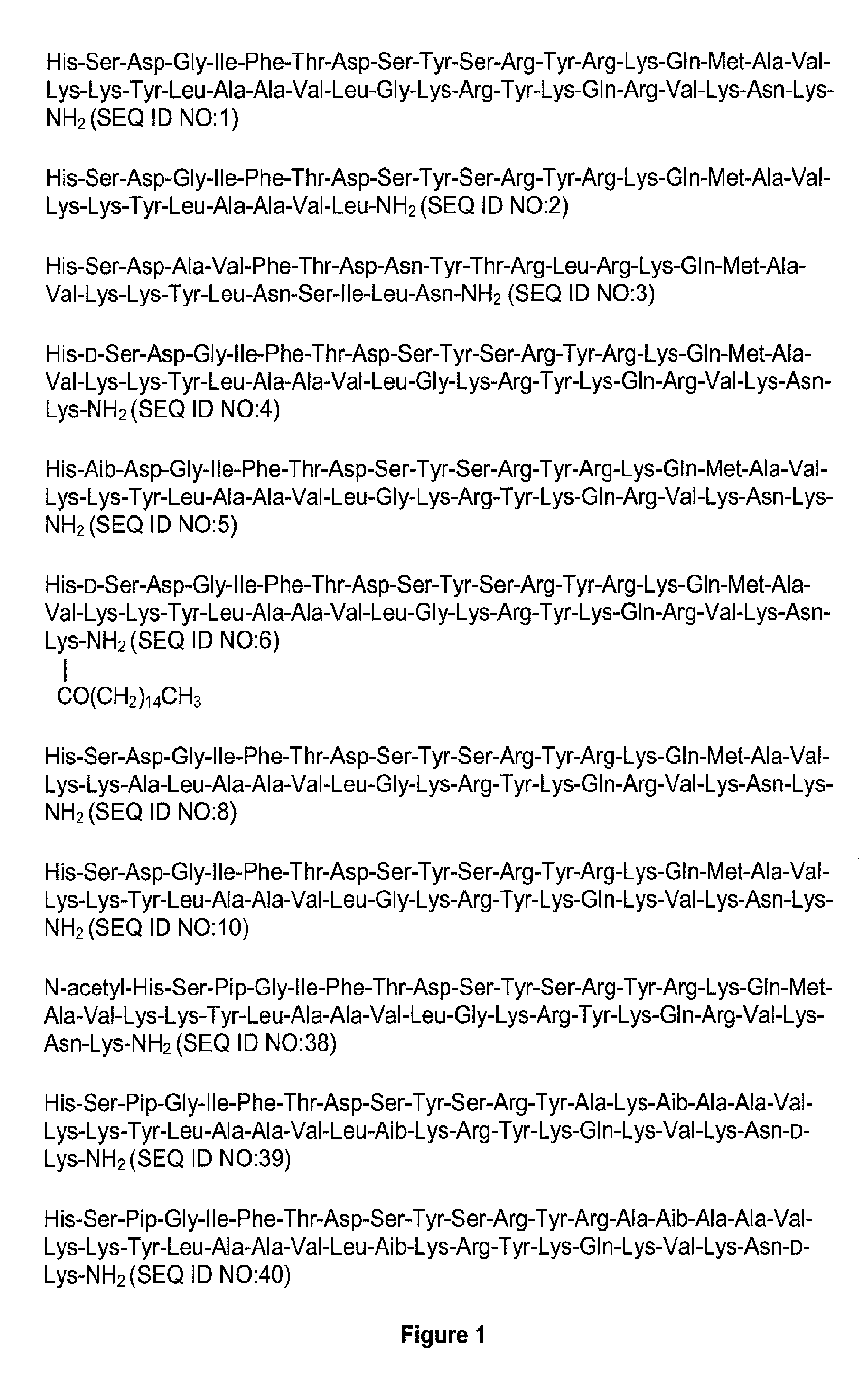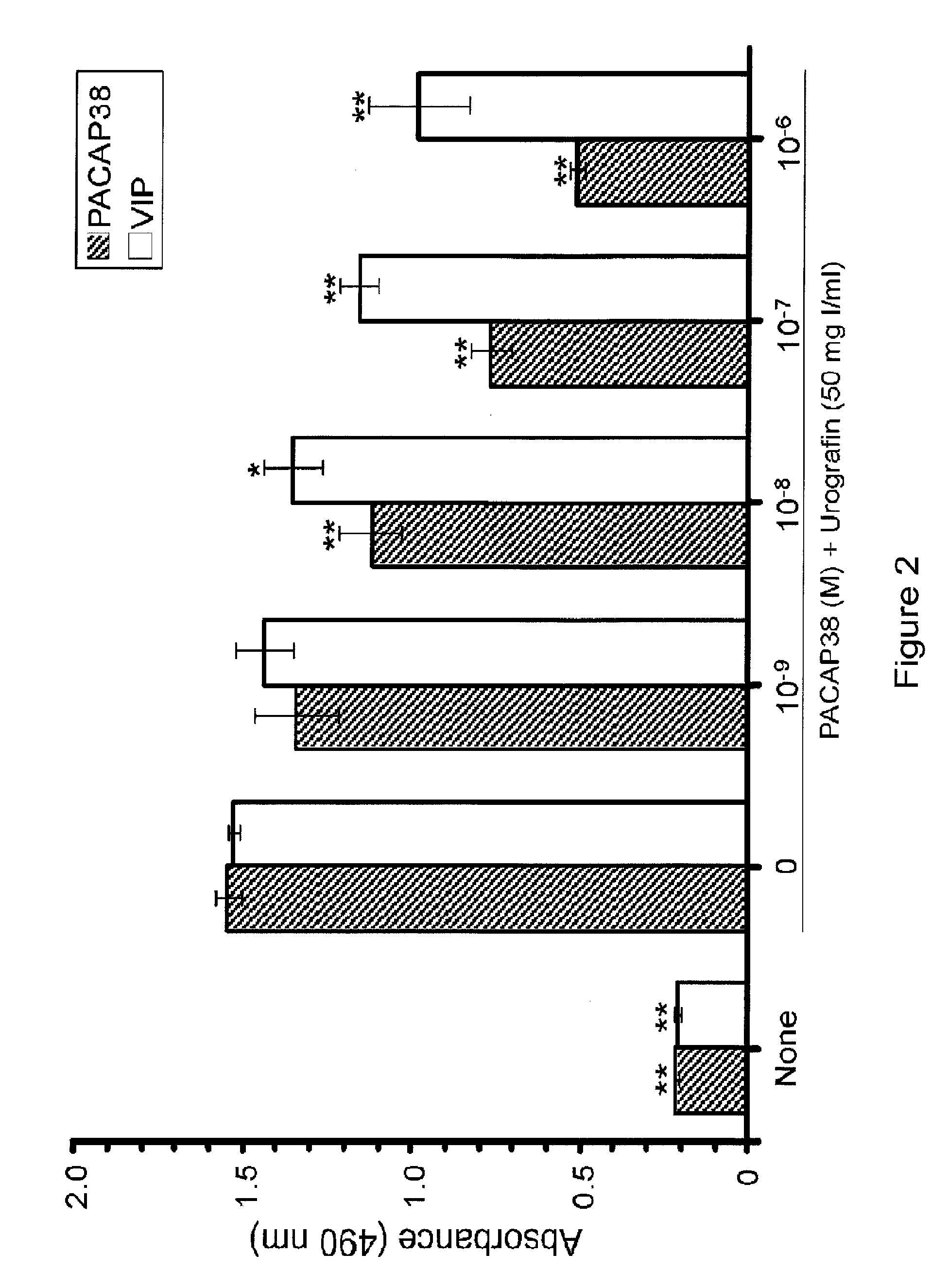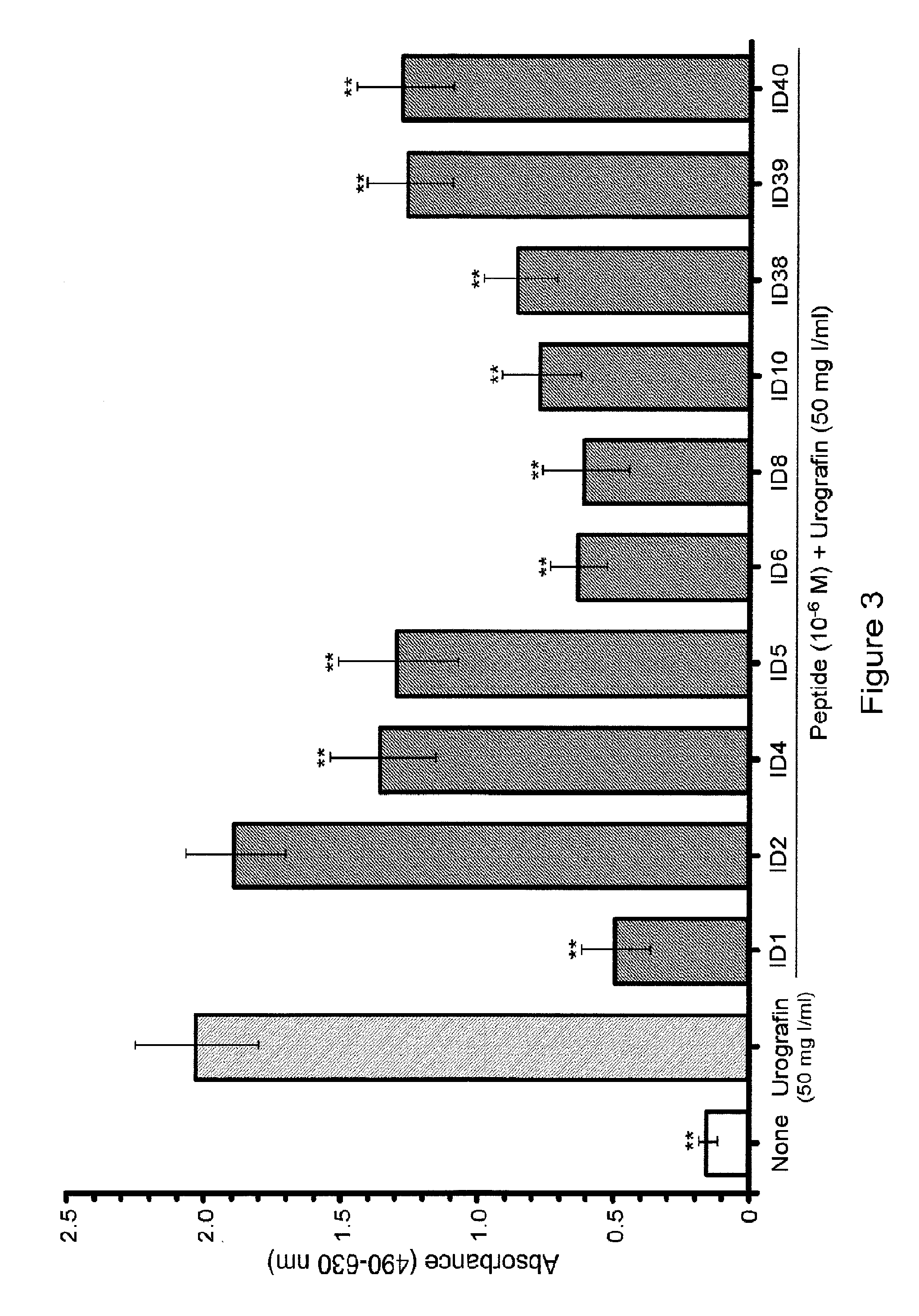Use of pituitary adenylate cyclase-activating polypeptide (PACAP) and PACAP analogs for treating contrast-induced nephropathy
a technology of adenylate cyclase and adenylate cyclase, which is applied in the direction of hormone peptides, peptide/protein ingredients, drug compositions, etc., can solve the problems of affecting the development of therapeutics for the treatment, management or prevention of kidney injury caused by one or more iodinated radiocontrast media, and the insensitivity of serum creatinine, so as to achieve the effect of protecting organs
- Summary
- Abstract
- Description
- Claims
- Application Information
AI Technical Summary
Benefits of technology
Problems solved by technology
Method used
Image
Examples
example 1
Reduction of Urografin-Induced Renal Epithelial Cell Toxicity by PACAP38, VIP and PACAP Analogs
[0214]Iodinated radiocontrast media are used to enhance the visualization of blood vessels and internal organs for a wide range of diagnostic and / or interventional procedures. Nephrotoxicity is usually the “dose-limiting” toxicity for the use of iodinated radiocontrast media as therapeutics. The toxic effects of short-term treatment with iodinated radiocontrast media on the kidney are characterized by a decrease in the glomerular filtration rate, which is usually assessed as an increase in creatinine or cystatin C in serum, and injury to the proximal tubule epithelial cells, which is assessed as an increase in KIM-1 or netrin-1 in the urine.
[0215]Treatment of human renal proximal tubule epithelial cells with Urografin resulted in a large significant increase in the activity of lactate dehydrogenase in the culture medium (FIG. 2). The addition of PACAP38 to the medium resulted in a signific...
example 2
Reduction of Iohexol-Induced Renal Epithelial Cell Toxicity by PACAP38 and VIP
[0218]Treatment of human renal proximal tubule epithelial cells with iohexol resulted in a large significant decrease in the number of viable cells (FIG. 4). The addition of PACAP38 or VIP to the medium resulted in a significant dose-dependent reduction in the loss of viable human renal proximal tubule epithelial cells caused by iohexol. At the highest dose tested, PACAP38 almost completely prevented the loss of viable human renal proximal tubule epithelial cells caused by iohexol. PACAP38 was significantly more potent than VIP as a renoprotectant in this in vitro model. Treatment of human renal proximal tubule epithelial cells with iohexol also resulted in a large significant increase in the concentration of KIM-1 in the medium (FIG. 5). The addition of PACAP38 to the medium significantly reduced the iohexol-induced secretion of KIM-1 into the medium.
[0219]These experiments show that PACAP-like compounds ...
example 3
Reduction of Urografin-Induced Inflammatory Responses in the Kidney by PACAP38
[0220]The toxic side-effects on the kidney of many commonly used therapeutics, such as cisplatin, cyclosporine A and gentamicin, are accompanied by robust inflammatory responses, including the up-regulation of many pro-inflammatory cytokines and chemokines.
[0221]Male homozygous eNOS-deficient mice were given a single intravenous injection of Urografin. Some of these mice were also given 20 μg of PACAP38 were intraperitoneally 1 hour before the injection of Urografin and an additional dose 12 hours after the injection of Urografin. The mice treated only with Urografin had significantly increased kidney levels of TNF-α mRNA (FIG. 9) and iNOS-1 mRNA (FIG. 10). Treatment of Urografin-injected mice with PACAP38 reversed the increases in kidney levels of TNF-α mRNA and iNOS mRNA (FIGS. 9 and 10). The mice treated only with Urografin also had significantly increased kidney levels of TNF-α protein (FIG. 16), MCP-1...
PUM
| Property | Measurement | Unit |
|---|---|---|
| body weight | aaaaa | aaaaa |
| particle size | aaaaa | aaaaa |
| pore size | aaaaa | aaaaa |
Abstract
Description
Claims
Application Information
 Login to View More
Login to View More - R&D
- Intellectual Property
- Life Sciences
- Materials
- Tech Scout
- Unparalleled Data Quality
- Higher Quality Content
- 60% Fewer Hallucinations
Browse by: Latest US Patents, China's latest patents, Technical Efficacy Thesaurus, Application Domain, Technology Topic, Popular Technical Reports.
© 2025 PatSnap. All rights reserved.Legal|Privacy policy|Modern Slavery Act Transparency Statement|Sitemap|About US| Contact US: help@patsnap.com



